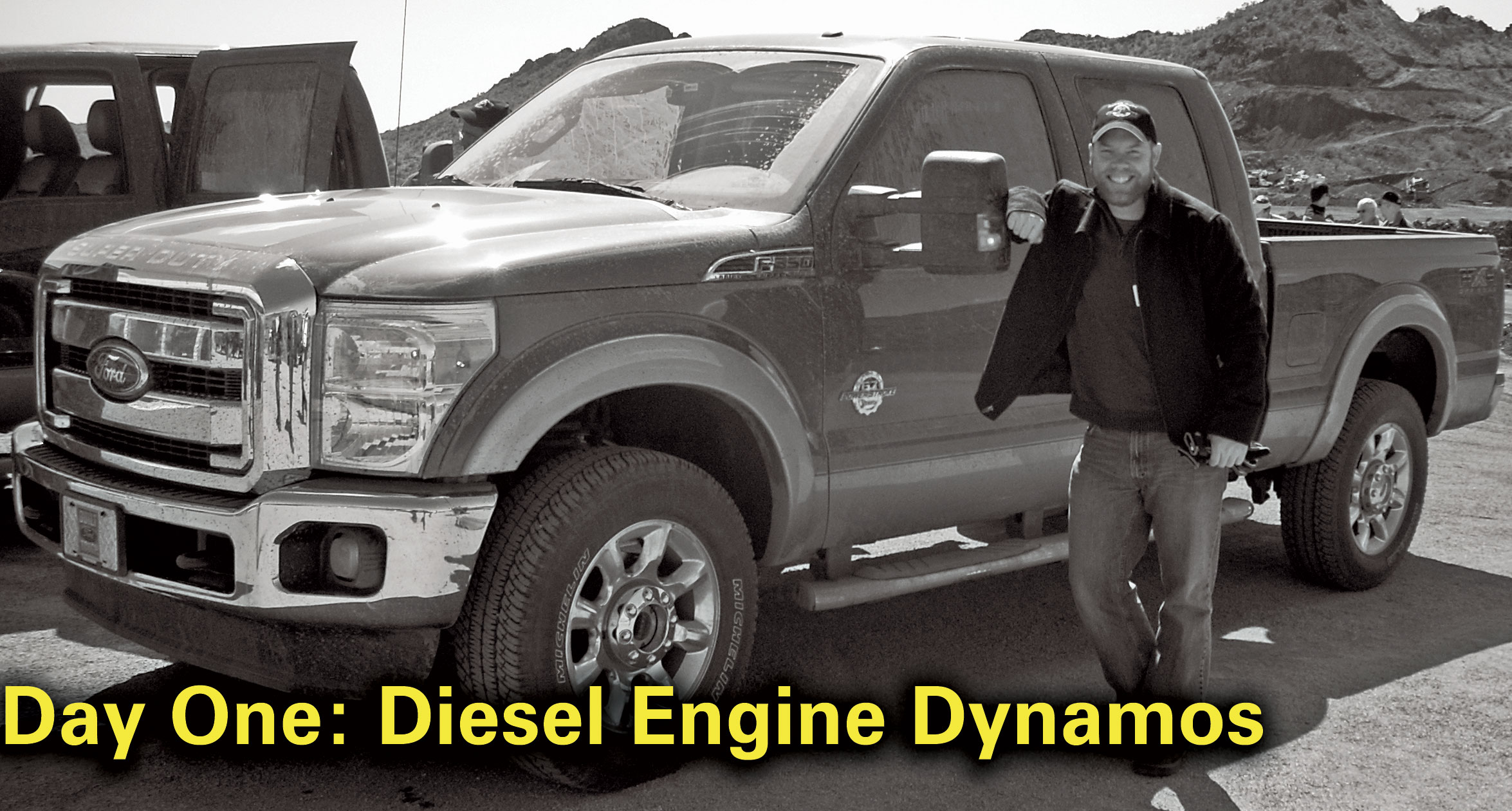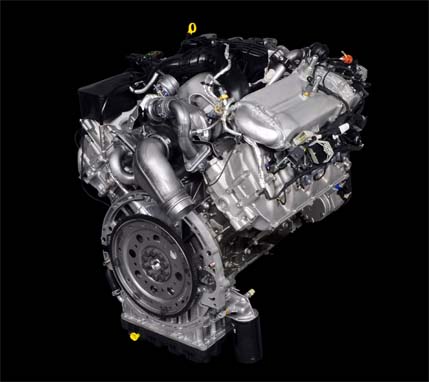Five Days from Our Ford Super Duty Diary

Automotive magnate and truck specialist Ford Motor Co. invited journalists from all over the country to test drive its new 2011 Super Duty trucks out in the Arizona desert. Writers flew into Prescott, Ariz., and traveled cross country a few 100 miles to Scottsdale, testing out the new capabilities of the 2011 Super Duty lineup (the F-250 through F-450 and chassis cabs F-350 through F-550).
There were a myriad of new technologies and features that impressed this journalist and Compact Equipment magazine along the way, and over these next five days we’ll go through some of the features that inspired us the most. Top of the list is the new Ford diesel engine. Navistar used to make Ford’s diesel power plants, but for 2011 Ford debuted its first in-house diesel and it’s a doozy – a Ford-engineered, Ford-tested and Ford-manufactured 6.7-liter Power Stroke V-8 turbocharged. The new diesel engine delivers best-in-class 735 ft-lb of torque (at 1,600 rpm), 390 hp (at 2,800 rpm) and class-leading fuel economy. So those looking for both big power and increased fuel economy can turn to the industry leader in truck sales for the last 30 years.
The new 6.7-liter diesel engine also shares the Super Duty’s reliability and durability while enabling best-in-class towing capability of 24,400 lbs. Teams of journalists towed monster trailers up mountains in Arizona and the new diesel hauled easy and safely with no complaints (especially with each truck’s Tow Haul function). Tow Haul Mode, along with the integrated engine exhaust brake, helps improve driver confidence with large loads on steep inclines, prolonging brake pad life and diminishing white-knuckle driving.
Besides its power, the second thing you’ll notice is the 6.7-liter Power Stroke turbocharged diesel engine is quieter. Enhancements to the combustion system, structural integrity of the compacted graphite iron block and the single turbocharger mounted to the engine block account for many of the NVH (noise, vibration, harness) improvements.
The new engine architecture also enables easier service work for all major engine components, reducing downtime for mechanics and gear heads. For example, on turbocharger service the body/cab no longer has to be removed from the frame to access the turbo; also, the high-pressure fuel pump, EGR (exhaust gas recirculation) components and thermostats are directly accessible from the front of the vehicle.
 The real surprise of the new Ford diesel was the fuel economy. The high-pressure Bosch fuel system injects fuel at more than 29,000 psi. The system delivers up to five injection events per cylinder per cycle using eight-hole piezo injectors to spray fuel into the piston bowl. The direct-injection system is calibrated and phased for optimum power, fuel efficiency and NVH performance.
The real surprise of the new Ford diesel was the fuel economy. The high-pressure Bosch fuel system injects fuel at more than 29,000 psi. The system delivers up to five injection events per cylinder per cycle using eight-hole piezo injectors to spray fuel into the piston bowl. The direct-injection system is calibrated and phased for optimum power, fuel efficiency and NVH performance.
Ford even had a fuel challenge on the trip and I was able to get 23 mpg on a 90-mile test run, which included off-road, highway and Scottsdale rush hour traffic. These new diesels are ultra powerful (735 ft-lb of torque is insane) and ultra efficient (one journalist scored 34 mpg on the same fuel economy trip). These new diesels are even compatible with B20 fuel, allowing greener fueling options of up to 20 percent biodiesel and 80 percent petroleum diesel. But diesels are just the beginning for these Super Duty dynamos – stay tuned tomorrow when we tackle transmissions and beyond.

Comments are closed here.